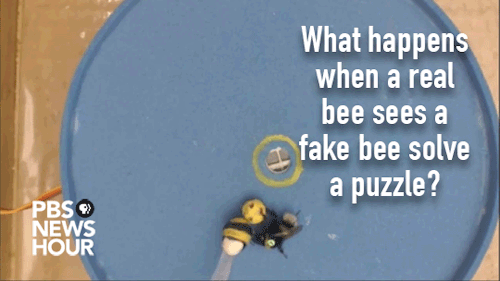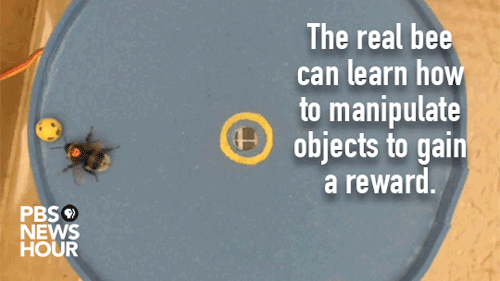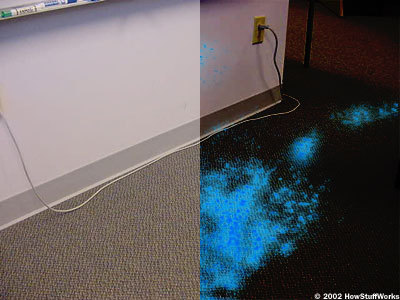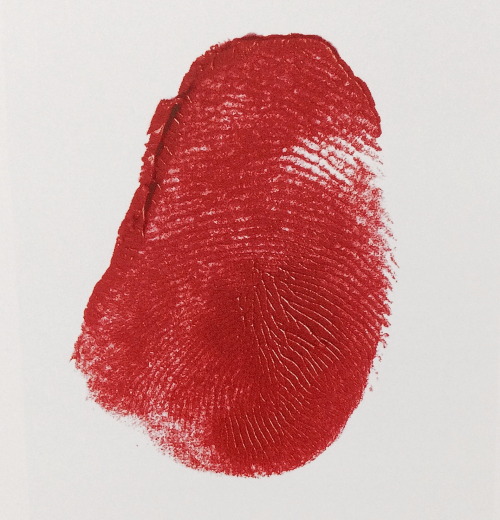What Does It Take To Teach A Bee To Use Tools? A Little Time, A Good Teacher And An Enticing Incentive.


What does it take to teach a bee to use tools? A little time, a good teacher and an enticing incentive. Read more here: http://to.pbs.org/2mpRUAz
Credit: O.J. Loukola et al., Science (2017)
More Posts from Theperpetualscholar and Others






Frogs Anura


Image Source: Polygondata from BodyParts3D made by DBCLS. Neurocranium (red) and facial bones (blue). Wikimedia Commons.
The facial skeleton/viscerocranium (blue) is made up of 14 bones.
Nasal (2)
Lacrimal (2)
Palatine (2)
Inferior Nasal Concha (2)
Zygomatic (2)
Vomer
Maxilla (2)
Mandible
The braincase/neurocranium (red) is made up of 8 bones,.
Frontal
Sphenoid
Parietal (2)
Ethmoid
Temporal (2)
Occipital
Note:
Cranium = all the bones of the head excluding the mandible.
Skull = all the bones of the head including the mandible.


Luminol is a chemical that can be used to show trace amounts of blood by creating a light producing chemical reaction when mixed with hemoglobin.
Luminol powder is mixed into a liquid containing hydrogen peroxide and other chemicals. This mixture will then be sprayed over the area that is being examined.
The reaction of the Luminol spray mixing with the iron in blood will then produce a blue glow that can be seen in a dark room.
Other substances that can accidentally have the same reaction with Luminol are: bleach, urine, faeces & horseradish.
Unfortunately Luminol can destroy other crime scene evidence so it is usually used after other options have been explored.

Since I get asked a lot about where to learn more about the human brain and behaviour, I’ve made a masterpost of books, websites, videos and online courses to introduce yourself to that piece of matter that sits between your ears.
Books
The Brain Book by Rita Carter
The Pyschology Book (a good starter book) by DK
Thinking, Fast and Slow by Daniel Kahneman
Quiet: The Power of Introverts in a World That Can’t Stop Talking by Susan Cain
The Man Who Mistook His Wife for a Hat by Oliver Sacks
The Brain: The Story of You by David Eagleman
The Brain That Changes Itself: Stories of Personal Triumph from the Frontiers of Brain Science by Norman Doidge
This Is Your Brain on Music by Daniel Levitin
The Autistic Brain by Richard Panek and Temple Grandin (highly reccomended)
Sapiens: A Brief History of Humankind by Yuval Noah Harari (not really brain-related, but it is single handedly the best book I have ever read)
Websites
@tobeagenius (shameless self-promotion)
How Stuff Works
Psych2Go
BrainFacts
Neuroscience for Kids (aimed at kids, but it has some good info)
New Scientist
National Geographic
Live Science
Videos & Youtube Channels
Mind Matters series by TedEd
Crash Course Psychology
SciShow Brain
Psych2Go TV
asapSCIENCE
Brain Craft
Its Okay To Be Smart
Online Courses
The Addicted Brain
Visual Perception and The Brain
Understanding the Brain: The Neurobiology of Everyday Life
Pyschology Of Popularity
Harvard Fundamentals Of Neuroscience
reasons why i claim to learn latin:
it’s a beautiful language
its historical importance
the literature is brilliant and best enjoyed in its original language
reasons why i actually learn latin:
so when people ask me to say something in latin i can tell them a meme and claim it means something beautiful
so if i ever get a chance to go back in time, i can talk about dumb shit with people like cicero and mark antony
so i can communicate with my brethren, the demons from hell
man it’s so wild to me that the greeks literally thought that a large number of women’s ailments were caused by their wombs (which they believed to be a weird animalistic thing living in women’s bodies) just picking up and migrating all over the place (fun fact, the word hysteria comes from this nonsense), and while that’s horribly misogynistic and terrible i can’t say i wouldn’t milk that shit for all it’s worth if i lived in ancient greece
like, gotta go harvest the crops? sorry dude, womb’s all up in my arms, can’t do anything about it
want me to weave something? love to but the ol womb’s at it again, you know how it is
got caught making out with the neighbor’s wife? haha man that womb of mine sure is a riot
Feeding the gods: Hundreds of skulls reveal massive scale of human sacrifice in Aztec capital.
Fun Fact: The obsidian blade used during the rituals are sharper than today’s surgical steel.
The image below shows a reconstruction of Tenochtitlan, the capital of the Aztecs. Templo Mayor is the pyramid seen center-back, with two temples on top. One temple was dedicated to the war god, Huitzilopochtli, and the other to the rain god, Tlaloc.

Image Source: Rosemania. Reconstruction of Tenochtitlan, the capital of the Aztecs - the centre of modern Mexico City. (National Museum of Anthropology of Mexico City). Wikimedia Commons.
The enormous rack of skulls called, Tzompantli, was built in front of the Templo Mayor pyramid. The Mexica people performed human sacrifices to feed the gods. The Aztecs made up the majority of the Mexica people. To them, the skulls would guarantee the sustained continuation of humanity.
There are numerous depictions of tzompantli in Aztec codices. Here is one taken from the 16th Century Aztec manuscript, Codex Duran. Image source: Public Domain.

The Spanish conquistadors marched into Tenochtitlan in 1519. The Spanish saw the skulls and the practice of human sacrifice as barbaric. In 1521 the Templo Mayor was torn down, and the tzompantli paved over. The ruins are underneath of what is known today as Mexico City. Archaeologists are currently studying the skulls to learn about rituals and the postmortem handling of those that were sacrificed.

A note on Nuclear Fission
When an atom fissions, it releases a teeny tiny amount of energy ( The decay of one atom of uranium-235 releases about 200MeV or about 3*10-11J.). But atoms are quite small. An atom does not make a big explosion when it splits.
To get a big explosion, you need to split lots and lots and lots and lots and lots and lots and lots and lots and lots of them—many, many trillions of them.
Each one releases only a teeny amount of energy, but when you add up the teeny amount of energy from trillions and trillions and trillions of atoms, then you get a big explosion. (The explosion of 1kg of TNT releases 4MJ).

-
 reixulian reblogged this · 2 weeks ago
reixulian reblogged this · 2 weeks ago -
 reixulian liked this · 2 weeks ago
reixulian liked this · 2 weeks ago -
 mrkiwiz46 reblogged this · 2 weeks ago
mrkiwiz46 reblogged this · 2 weeks ago -
 durinsbride reblogged this · 2 weeks ago
durinsbride reblogged this · 2 weeks ago -
 fandom-hoarder reblogged this · 2 weeks ago
fandom-hoarder reblogged this · 2 weeks ago -
 thehorseofadifferentcolour reblogged this · 2 weeks ago
thehorseofadifferentcolour reblogged this · 2 weeks ago -
 fading-bisexual-queen-milkshake reblogged this · 3 weeks ago
fading-bisexual-queen-milkshake reblogged this · 3 weeks ago -
 naganna418 liked this · 4 weeks ago
naganna418 liked this · 4 weeks ago -
 pheonixqueen reblogged this · 4 weeks ago
pheonixqueen reblogged this · 4 weeks ago -
 pheonixqueen liked this · 4 weeks ago
pheonixqueen liked this · 4 weeks ago -
 fox-mulder-666 reblogged this · 1 month ago
fox-mulder-666 reblogged this · 1 month ago -
 kirbo-kirbstar liked this · 1 month ago
kirbo-kirbstar liked this · 1 month ago -
 lmaojune reblogged this · 1 month ago
lmaojune reblogged this · 1 month ago -
 catsarecoolstudios reblogged this · 1 month ago
catsarecoolstudios reblogged this · 1 month ago -
 autistic-morpheus liked this · 1 month ago
autistic-morpheus liked this · 1 month ago -
 meieuys liked this · 1 month ago
meieuys liked this · 1 month ago -
 the-bellfrost-incident reblogged this · 1 month ago
the-bellfrost-incident reblogged this · 1 month ago -
 sensationaltrainreading reblogged this · 1 month ago
sensationaltrainreading reblogged this · 1 month ago -
 arsenichoneypuff liked this · 1 month ago
arsenichoneypuff liked this · 1 month ago -
 almost-correct-quotes liked this · 2 months ago
almost-correct-quotes liked this · 2 months ago -
 realmagpiehours reblogged this · 2 months ago
realmagpiehours reblogged this · 2 months ago -
 realmagpiehours liked this · 2 months ago
realmagpiehours liked this · 2 months ago -
 starlight-in-a-bottle reblogged this · 2 months ago
starlight-in-a-bottle reblogged this · 2 months ago -
 adelth liked this · 2 months ago
adelth liked this · 2 months ago -
 crowlame-and-azirafail reblogged this · 2 months ago
crowlame-and-azirafail reblogged this · 2 months ago -
 thewitchiestdoctor liked this · 2 months ago
thewitchiestdoctor liked this · 2 months ago -
 wreckerradioactive reblogged this · 2 months ago
wreckerradioactive reblogged this · 2 months ago -
 monstrumzirkus reblogged this · 2 months ago
monstrumzirkus reblogged this · 2 months ago -
 a-friend-of-mara liked this · 2 months ago
a-friend-of-mara liked this · 2 months ago -
 pretty-pink-seaslug reblogged this · 2 months ago
pretty-pink-seaslug reblogged this · 2 months ago -
 timatisblog reblogged this · 2 months ago
timatisblog reblogged this · 2 months ago -
 namelessokami reblogged this · 2 months ago
namelessokami reblogged this · 2 months ago -
 fallen-starr liked this · 2 months ago
fallen-starr liked this · 2 months ago -
 dragononymous liked this · 2 months ago
dragononymous liked this · 2 months ago -
 satsuj1n liked this · 3 months ago
satsuj1n liked this · 3 months ago -
 gamergirl-lumine liked this · 3 months ago
gamergirl-lumine liked this · 3 months ago -
 brightclaws5tudios reblogged this · 3 months ago
brightclaws5tudios reblogged this · 3 months ago -
 brightclaws5tudios liked this · 3 months ago
brightclaws5tudios liked this · 3 months ago -
 lazyassryan reblogged this · 3 months ago
lazyassryan reblogged this · 3 months ago -
 lazyassryan liked this · 3 months ago
lazyassryan liked this · 3 months ago -
 pileofrocksjh reblogged this · 3 months ago
pileofrocksjh reblogged this · 3 months ago -
 pileofrocksjh liked this · 3 months ago
pileofrocksjh liked this · 3 months ago -
 awkwardnoob reblogged this · 3 months ago
awkwardnoob reblogged this · 3 months ago -
 roseycanvas reblogged this · 3 months ago
roseycanvas reblogged this · 3 months ago -
 lucadrawss reblogged this · 3 months ago
lucadrawss reblogged this · 3 months ago -
 intothefandomverse liked this · 3 months ago
intothefandomverse liked this · 3 months ago -
 emmajanereading reblogged this · 3 months ago
emmajanereading reblogged this · 3 months ago -
 aedifica liked this · 3 months ago
aedifica liked this · 3 months ago